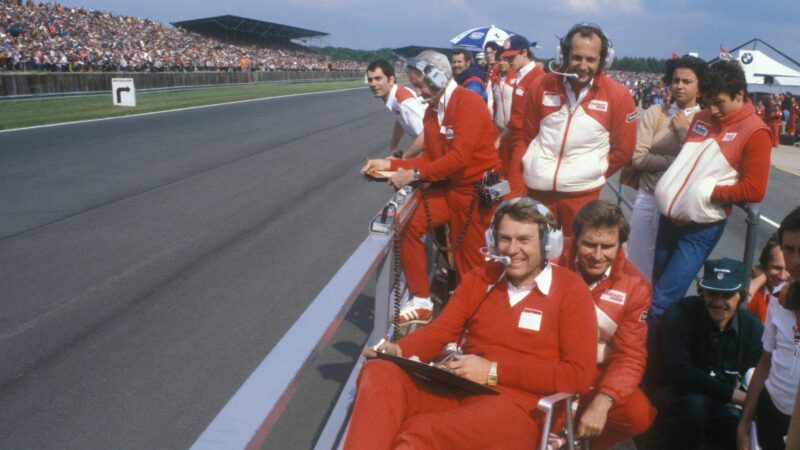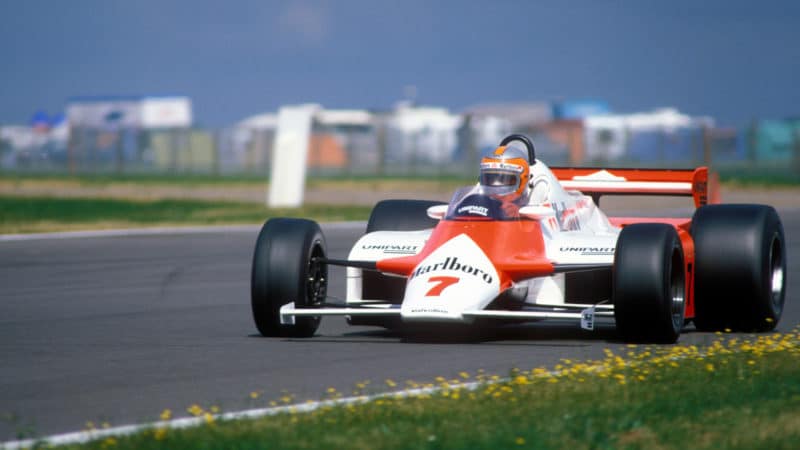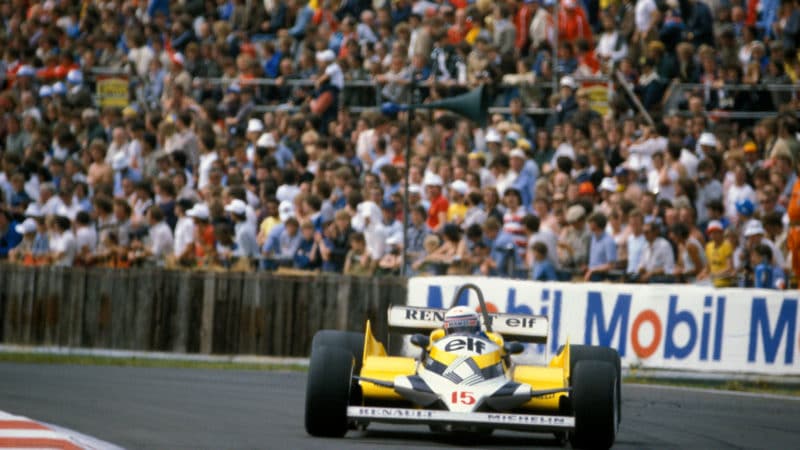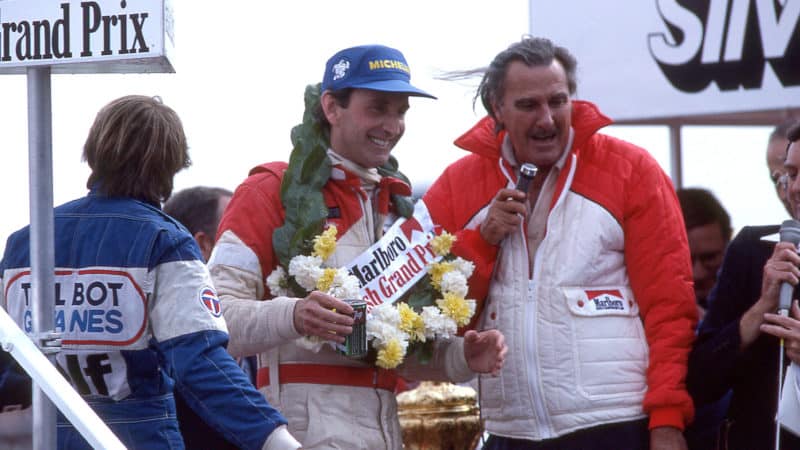That came to pass as early as the third lap: a bit too much kerb had the Ferrari, already riding high, bouncing on its springs before spinning in a cloud of smoke. The Williams of an unsighted Alan Jones, who had also got the jump from the fourth row, joined it in the fencing – as did de Cesaris.
“Andrea was a quick kid but didn’t have enough life or motor racing experience,” says Watson. “He did what he always did: reacted suddenly. I’m amazed he missed me.”
Watson had braked almost to a standstill in avoidance – and stalled the engine: “Luckily, I had enough presence of mind to flick on the electric fuel pump and enough momentum – about 10-15mph – to bump-start it.”
But not before Carlos Reutemann (Williams), the Alfa Romeos of Mario Andretti and Bruno Giacomelli and Talbot-Ligiers of Patrick Tambay and Jacques Laffite had grabbed their opportunities.
So began a trademark Watson charge: the Ligiers were picked off easily; Reutemann was sold a nifty dummy into the chicane; and Didier Pironi, his Ferrari’s engine about to expire, was tucked away at Becketts.

Ron Dennis and co await a famous first win for the new-look McLaren team
Grand Prix Photo
“Everybody talks about that McLaren’s carbon fibre tub,” says Watson. “Clearly that was a very important element. But [designer] John Barnard was never one to do things the inexpensive way and so many functions of that design were exceptional. For example, the front uprights were Fabergé-like pieces of engineering and the car was particularly stable under braking.”
When combined with the misfortunes of Giacomelli (gearbox), Piquet (tyre failure/crash) and cruising leader Prost (engine), Watson found himself running in second place by lap 18 (of 68).



